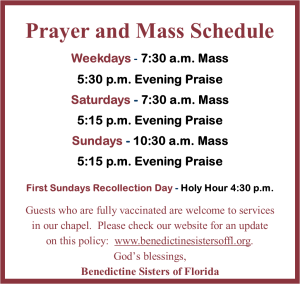 “And, one of them, realizing he had been healed, returned, glorifying God in a loud voice; and he fell at the feet of Jesus and thanked him.”
“And, one of them, realizing he had been healed, returned, glorifying God in a loud voice; and he fell at the feet of Jesus and thanked him.”
We’re not told how these men discovered that they were healed, but it probably didn’t take long. Looking at one of his comrades, a leper probably said something like, “Where is your leprosy? Your face is clear. The skin of your hands is soft and even.” Then all of them begin to examine themselves and, sure enough, they ARE healed. What “whoop and holler” must have gone up as they took off running toward the priests’ village.
But only one man returned to give thanks – that gives us the moral of the story: Jesus expects us to show gratitude. But thankfulness is a learned trait – at least the outward expression is. If you don’t actually remember hearing this expression, you surely had it ingrained into the fiber of your being. When you were handed a gift or a compliment, Mom would prompt: “What do you say?” Most of us were taught the value of a thank you note (now an e-card). However, we must train ourselves to show thanks, to give thanks, to be filled with thanksgiving.
But this thankfulness is sometimes time-consuming. Sometimes it requires going out of our way, delaying what we had at the top of our TO DO list. A life of thanksgiving is a life of prayer. Prayer first. Before going to the priests to be declared healed. Prayer first. Before the things we have to do. Prayer first. Before we get immersed in our everyday activities. Prayer first. Thanksgiving first.
Finally, gratitude is an important component in our salvation. Were all ten lepers healed? Yes. Were they all saved? Yes, in the sense that they were rescued from their disease. But maybe not in the sense of drawing closer to God in thankfulness and dependence. Please God that may we be ever thankful for favors great and small, seen and unseen. In the words of tomorrow’s Gospel Acclamation: “In all circumstances, give thanks, for this is the will of God for you in Christ Jesus.
Recently I heard a true story of gratitude that wrought salvation. The lady who told the story works downtown in a large city. Every morning, she encountered a middle‑aged woman in a shabby coat soliciting spare change from passers-by. She greeted everyone with a smile and a pleasant “Good morning.” The lady who told the story almost always gave her something. After almost a year of this routine, however, the woman in the shabby coat disappeared. My friend wondered what had happened to her.
Then, one beautiful morning, she was in her place in front of the church, still wearing the same, shabby coat. As  folks reached into their purses or pockets for their usual donation, the woman stopped each of them. “Thank you for helping me all those days,” she said. “You won’t see me again because I’ve found a job.” With that, she reached into a bag and handed each one a wrapped package. She had been standing at her old spot waiting, not for a handout, but for the people she recognized so that she could give each of them a doughnut. She recognized those who had given to her in her time of need. This is gratitude!
folks reached into their purses or pockets for their usual donation, the woman stopped each of them. “Thank you for helping me all those days,” she said. “You won’t see me again because I’ve found a job.” With that, she reached into a bag and handed each one a wrapped package. She had been standing at her old spot waiting, not for a handout, but for the people she recognized so that she could give each of them a doughnut. She recognized those who had given to her in her time of need. This is gratitude!
Hearing the woman’s story, have pondering the story of the grateful cured man, I am reminded of the words of Hosea, the words that inspired the Weston Priory hymn: “Come back to me with all your heart, don’t let fear keep us apart.”
It took courage for the now-cleansed man to retrace his steps back to Jesus, to publicly – loudly – glorify God and proclaim his thanks to Jesus. Deep in his heart he must have sensed the spirit of the words of Hosea: “Come back to me.”
~Reflection by Sister Roberta Bailey, OSB, Prioress

